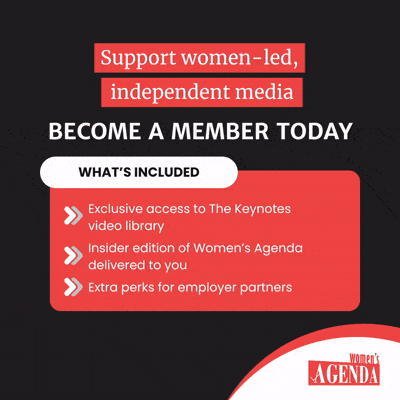Buying a magazine is a little luxury for many — but increasingly women are turning away from their gossipy diet-obsessed titles and looking for something else.
One title that saw this gap in the market was Womankind, which launched on 28 July.
Contrary to most magazines it had just three, simple headlines placed subtly on its cover.
The celebrity machine.
Why we need more time, and less clothes.
The one story that’s changing your life.
In a nutshell, these three headlines describe the purpose of the title and why it purports to be so different from the magazines that it will fight for your attention with on the newsstands.
And there’s one other key difference – it has no advertisements. Priced at $15, Womankind editor Antonia Case notes it is around $5 higher than competitive titles with advertisements. It’s a little like being given the ability to pay to “opt out” of advertisements in print. Case says that with no advertising, they focus entirely on the reader as their clients, noting that the question of advertising begs the question “how much is your mind worth?”
Despite launching just a week ago, their cover was quickly voted one of the top in the world by German media website MEEDIA, as well as being the top selling item at the Byron Bay Writers’ festival and selling out in bookstores during the first few days of launch.
With quotes from Noam Chomsky, historic artwork, and large full double page spread photographs of intriguing moments, makeup and tips on pleasing your partner do not rate a mention.
It spans art and poetry, documentaries and inspirational women like Simone de Beauvoir, and slowly it looks to teach readers how to live again. “How can music, an abstract sound, bring us to tears?” it asks in a short snippet about why music gets us high. “Why do Australians hate thinkers?” they ask later on in the title.
“Buying a book is much more than just funneling out the cash; unless, of course, you buy your books online,” they say. Some of us will argue successfully that a book is more than just the paper it is printed on, but the Womankind team is right about one thing – life is about experiences, and feeling.
It presents early 19th century brooches brushed up against Alexander McQueen’s Sarabande dress from the Spring/Summer 2007 collection, and when you turn to the next page it’s suddenly beautiful circa 1900s Louis Majorelle furniture. If women’s mags could be said to chatter when they talk to you, Womankind could be said to sing.
Antonia Case agreed to answer some questions about the title, and how it fits into our current media landscape:
Who came up with the idea for this title and why?
Although I came up with the idea originally, our team collaborated to put the magazine together. We launched New Philosopher magazine last year and immediately noticed how many women were buying and subscribing. It was clear that women were interested in reading a ‘smart’ magazine with a strong design aesthetic.
We wanted to offer Australian women an alternative to the noise out there – the fashion, celebrity-focussed, diet and nonsense fuelled world of women’s magazines.
What’s the philosophy behind the title?
Womankind magazine aims to make women see the world and themselves in a different light. That’s the message of the butterfly, our design theme for Issue one, or metamorphosis.
How long did the magazine take from inception to getting it on the shelves?
The design stage of Womankind took a long time to come together. We worked full-time on the design for nine months, which involved about six complete overhauls. The reason it took so long was that we had nothing to work with. It was a new concept in women’s magazines; no other magazine in the world is even remotely similar, so the design was integral to the concept we were creating. One of our readers called it a “multi-sensory” magazine – almost like an artwork, where editorial and imagery play side-by-side. I think that’s the perfect description.
The editorial side of things probably took around 8 months. Booker Prize winner DBC Pierre wrote a brilliant piece for us, as did philosopher Nina Power, and sociologist Ruth Quibell, and many other fantastic writers from Australia and Britain.
Why is there a demand from women for this magazine?
One of our readers wrote on her blog: “This magazine made me see the world in a way I’d never seen it before. It made me feel empowered.”
Another said: “I’d just like to say that it’s refreshing having a magazine that encourages, supports and inspires women of all ages to think past advertisements and celebrity gossip. I dream of a time where women, or society as a whole, can step up and change the world, and I honestly believe that your magazine will inspire its readers to do just that.”
I think women want to be challenged and inspired by a publication. They are tired of reading shopping catalogues.
Any thoughts generally on women and representation in the media?
It could be a lot better than it is. How many women interviewed in women’s magazines are like French philosopher Simone de Beauvoir (the Womankind cover girl for issue 1)? Or like the two Australians we featured – Lilli Morgan and Lyma Nguyen?
By the end of the magazine, you’ll have learnt a lot of unnecessary facts about butterflies, but you’ll also read that life doesn’t have to be the rigmarole it currently is. The Frankie magazine for the professional woman, it’s a breath of fresh air that acknowledges your ability to think, experience and appreciate. It’s time for more magazines to step up, and give women the credit they deserve.

